Integration: The Integrators Perspective
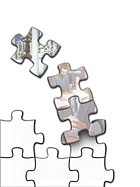
Systems integrators could not be more aware of the importance of information technology (IT) and its convergence with security products than if IT were the first and third letters of their name. The fact that those letters are part of the word “integrators†may be metaphorical for how intrinsic this technology is becoming to the products they are using now and will be in the future.
Some systems integrators’ enthusiasm for IT relates to their hopes that it will help standardize products in the industry.
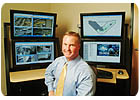
PHOTO FOR SDM BY BILLYBROWN.COM
Randy Jara, president of UPS Security Systems, Orange, Calif., also sees the writing on the wall regarding the increasing influence of the IT world upon security. “I think integration is going to be much more IT-driven,†he notes. “Your installers will be less the ‘panel wiring guys’ and more the IT software kind of guys.
“As our products continue to converge with the IT world, the people who buy from us are going to be different, and the people doing the work are going to be different,†he predicts. “We have to anticipate that or we’re going to end up being dinosaurs and dying.â€
For Wise, the issue is why end users need integrators at all. “I feel strongly we have to position ourselves for the change that is occurring,†Wise says about the speed of technological change in integrating security systems.
“We predominantly meet with IT managers instead of security managers,†he points out. “I have a technology and security customer, and in most instances, those two positions are not the same.
“You may have a security director and chief security officer that have standards and management protocols that need to be followed, and they may not be best friends with the IT side of the house,†Wise points out.
He adds that IT managers are becoming much more familiar with security products and trying to buy them directly over the Internet.
The only thing he thinks is preventing them from doing so is the expertise needed to determine what type of access control technology to use, or how many video surveillance cameras are needed, where to position and focus them, and other security installation and software skills.
“Anybody who wants to buy off the Internet is not a good customer for us because they’re not buying our expertise,†Jara declares. “We don’t try to compete against people buying widgets and gizmos off the Internet. It’s a different way of skinning the cat.â€
Wise sees the security business as a triangle with manufacturers, integrators and customers on each side, but the customers are on top.
“True technology companies like Microsoft and Cisco are becoming players in this market,†he observes. “If we don’t prepare ourselves to play very well at what we do best, which is employ and implement security, that third part of the triangle – the integrators – might shrink completely.â€
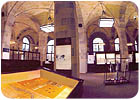
PHOTO COURTESY OF SABRE INTEGRATED SECURITY SYSTEMS
“I think our biggest challenges, in general, are whenever we have to get out on a customer’s network, and then trying to get IT to buy into these applications and working with them on all the restrictions in their network,†Jara relates. “That probably is our biggest challenge on any given day.
“Any time it has to go on a customer’s network, we have to have a lot more dialogue and high-level meetings and planning to make sure that the system goes right,†he declares. “We don’t control the network, and a lot of IT people don’t want this on their network, so we just have to work a lot harder about interfacing with IT people on their networks.â€
Alan Kruglak, senior vice president and co-owner of Genesis Security Systems LLC, Germantown, Md., agrees that working with IT requires more face-to-face contact.
“You spend a ton of time handholding in meetings, and you allocate the time to do it,†Kruglak asserts. “On one recent project, we had no less than 20 meetings with different groups.â€
When requirements and personnel change, more meetings are required, he says. “It’s a moving target,†he insists. Customers consider the cost of a project, but also their relationship with the systems integrator.
“So they trust your judgment,†Kruglak explains. “If you pick good customers that are open to discussion, you’ll learn some things in the process, and you may decide to change based on the win-win relationship you have with your customer.â€
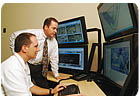
THE STATE OF INTEGRATION
Clifford Franklin, president of Sabre Integrated Security Systems LLC, New York, thinks “open architecture†and “convergence†are both buzz words and goals.“I think open architecture is a buzz word, and it’s a target the industry has to get to, and I think the IP devices are going to bring us towards that goal; I don’t think it’s truly here yet.
“I think it’s becoming more possible, since more stuff is being put over IP, but right now it’s a big mish-mash. Everyone says they can integrate, but they don’t really integrate; they interface with each other. I haven’t seen too much true integration of systems.â€
Genesis’ Kruglak thinks those companies that say they have open architecture really do not.
“That’s nonsense; their architecture itself is closed,†he maintains. “There is nothing wrong with that – somebody’s got to own and support it. If ‘open’ is defined as interfacing with other things, I think that’s how it is now. If you pay them enough money, they’ll interface with anything. That’s how they function.â€
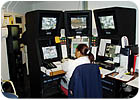
“I do think open architecture is more of a buzz word,†Price asserts. “The key word is interoperability. If you sit in on these meetings and participate in any of these standards bodies, interoperability is the only buzz word that matters.â€
Franklin points out that because security guards operate many such security systems, ease of operation is paramount.
“I think end users would want to see one control box that did both access control and CCTV and thirdly alarms all in one box with one GUI, and it’s seamless,†he theorizes. “A lot of our clients where we do access control and CCTV have to toggle between two GUIs, so it could be on the same computer.
“A lot of people are calling that an integrated system, but it’s not really -- you have to come out of one program and go into another,†Franklin notes.

PHOTO COURTESY OF SABRE INTEGRATED SECURITY SYSTEMS
Franklin has not seen demand for integration of fire alarms or HVAC systems, and he doesn’t expect to see integration with fire alarms in New York City.
“We don’t touch fire alarms at all,†he admits. “New York laws for fire alarms are so stringent, I can’t ever see a system being integrated with a fire alarm system.†Franklin keeps his systems separate from fire alarm systems in New York.
Kruglak, who also is president of National Security Integrators, does not see integration of fire or HVAC equipment happening in his market.
“When you integrate fire, especially fire, there’s no economic benefit to doing everything on one system,†Kruglak maintains. “The requirements are different.â€
Jara of UPS Security Systems has not done many HVAC integrations either. “We haven’t done software-related HVAC integrations, mostly just hardwired, where we fire relays to do this or that,†he explains.
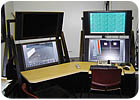
WHAT MANUFACTURERS CAN DO
Jara agrees that manufacturers need to continue to emphasize IT products. “They need to continue to focus on technology and technical training to help integrators understand that the market is not going to always be what we think it is today,†Jara maintains.“As an integrator, I think the things we do today are not the things we are going to do in three to five years, and it’s all going to be driven by the products manufacturers give us to sell,†Jara predicts.
“The products we sell today have a lot more to do with IT than they used to, so we have to get Microsoft-certified and manufacturers have to make sure the integrators know what is coming down the pike so we can be prepared for it when it gets here,†he suggests. “Sometimes we only see the new stuff at a show.â€
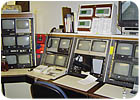
PHOTOs COURTESY OF SECURITY 101
“What integrators also look for is manufacturers that typically enable the integrating company to make money, and how you do that is limit distribution so not everybody sells it, and you don’t sell directly to end users,†Kruglak continues. Manufacturers who sell directly to end users are avoided by most integrators, Kruglak maintains.
Training that can be done on a technician’s own schedule, such as over the Internet or in video conference calls, also would be helpful for Jara’s company. “Knowing that the people we have today are not going to be the people servicing our products in the future, we have to train them -- they have to grow,†he stresses.
“Most manufacturers want you to commit to sending a technician to their office for a week at a time,†he reports. “That’s great, but our technicians are our most valuable resources.
“In almost every market, there’s not an abundance of technicians, so every time I pull a technician out of the field for a week, it costs me to send him there, and I lose the revenue he would generate for a week,†Jara points out. “I want to do training when it is convenient for me to do training.â€
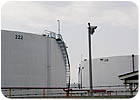
PHOTO COURTESY OF SABRE INTEGRATED SECURITY SYSTEMS
He thinks of Cisco as more of a hardware company and Microsoft more of a software giant, although he admits that view may be incorrect. One possible future he envisions is end users buying Microsoft software and components off the Internet. In this scenario, the function for the systems integrator might be to provide any security expertise and custom integration software required.
“It may be that in 15 to 20 years the days of licensing software will be gone and it’s more a customized delivery of services that utilize the software programs that have been put in place for everybody,†he theorizes. “If we don’t position ourselves as integrators that think that far ahead, we’re fooling ourselves into thinking that never will happen.â€
A current job of his was installing 46 surveillance cameras using power over Ethernet with security software and a standard server.
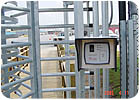
PHOTO COURTESY OF ANTEON
He was able to obtain a decent margin on the services of knowing which camera and lens to use. Nevertheless, Wise calculates using IT equipment was 28 percent more expensive than standard analog.
“But the IT guy’s very simple response was, ‘I want new technology; I don’t want to employ something that is outdated,’†he related.
The customer was able to sell installation of the IT system to his company on that basis. “He said, ‘I don’t buy anything old, I buy something new,’ and that’s exactly what they did.â€

PHOTO COURTESY OF ANTEON
Jara agrees. “From a capabilities and performance standpoint, the customer wants to know you’re going to be there for the long haul,†he points out. “So what kind of track record you can provide for quality service is an important differentiator for any company.â€
Side bar: Integrating Government Smart Card Standard With Agency Systems
Scott Price, group senior vice president with Anteon, Fairfax, Va., is deeply involved in the process of helping federal government agencies make their systems interoperable with the directive of the government’s new smart card standard.“A lot of the standards for interfaces between different vendor products are still ill-defined, so integrators are left patching these things together,†he declares. “You can’t take any capture device and hook it up to an enrollment system unless that device’s vendor has a long-standing relationship with the system’s vendor.â€
Depending on each agency’s system, he thinks wireless devices may be helpful in retrofitting readers or not requiring interoperability throughout the interior of a facility.
“In that scenario, it really does become the job of the integrator to go in and understand that system and figure out the most cost-effective way to achieve what the directive wants to achieve,†he notes.
Price thinks most of the specifics of the federal government’s smart card standard have been decided, but there are still some weak spots.
“Enough has been developed that people are on the same page, but there are still enough holes that the lines on the page do not always line up,†he concludes.
Looking for a reprint of this article?
From high-res PDFs to custom plaques, order your copy today!



